Molecular circuitry: International team breaks one-diode-one resistor electronics
 By creating a new type of molecular circuit switch, the team may have just opened the door to ultra-high-density computing within our lifetime.
By creating a new type of molecular circuit switch, the team may have just opened the door to ultra-high-density computing within our lifetime.
Jun 2nd, 2020
Read more
 By creating a new type of molecular circuit switch, the team may have just opened the door to ultra-high-density computing within our lifetime.
By creating a new type of molecular circuit switch, the team may have just opened the door to ultra-high-density computing within our lifetime.
Jun 2nd, 2020
Read more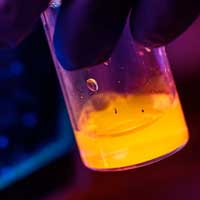 Scientists show boron nitride's promise for composites, biomedical applications.
Scientists show boron nitride's promise for composites, biomedical applications.
Jun 2nd, 2020
Read more Variable color sheets with a film thickness of 400 nanometers are expected to be applied to adhesive-type display elements, as they can adhere to skin or be transferred to various electronic devices at room temperature utilizing the high adhesiveness of elastomers.
Variable color sheets with a film thickness of 400 nanometers are expected to be applied to adhesive-type display elements, as they can adhere to skin or be transferred to various electronic devices at room temperature utilizing the high adhesiveness of elastomers.
Jun 2nd, 2020
Read more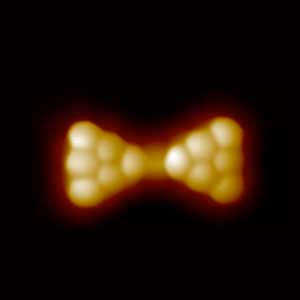 Graphene triangles with an edge length of only a few atoms behave like peculiar quantum magnets. When two of these nano-triangles are joined, a 'quantum entanglement' of their magnetic moments takes place: the structure becomes antiferromagnetic.
Graphene triangles with an edge length of only a few atoms behave like peculiar quantum magnets. When two of these nano-triangles are joined, a 'quantum entanglement' of their magnetic moments takes place: the structure becomes antiferromagnetic.
Jun 2nd, 2020
Read more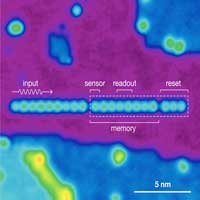 The sensor is capable of capturing magnetic waves and consists of an antenna, a readout capability, a reset button and a memory unit.
The sensor is capable of capturing magnetic waves and consists of an antenna, a readout capability, a reset button and a memory unit.
Jun 2nd, 2020
Read more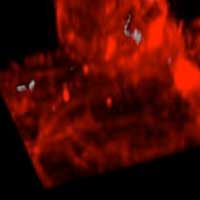 Scientists synthesized three-dimensional fuzzy graphene on a nanowire template to create a superior material for photothermally stimulating cells.
Scientists synthesized three-dimensional fuzzy graphene on a nanowire template to create a superior material for photothermally stimulating cells.
Jun 1st, 2020
Read more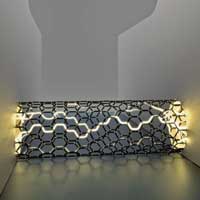 Technique paves the way for more energy efficient, 3D microprocessors.
Technique paves the way for more energy efficient, 3D microprocessors.
Jun 1st, 2020
Read more Researchers replaced widely-used, but environmentally unfriendly, R134a refrigerant with the more energy-efficient R600a. They dosed R600a with multi-walled carbon nanotubes.
Researchers replaced widely-used, but environmentally unfriendly, R134a refrigerant with the more energy-efficient R600a. They dosed R600a with multi-walled carbon nanotubes.
May 30th, 2020
Read more Imagine a flexible digital screen that heals itself when it cracks, or a light-emitting robot that locates survivors in dark, dangerous environments or carries out farming and space exploration tasks. A novel material could turn these ideas into reality.
Imagine a flexible digital screen that heals itself when it cracks, or a light-emitting robot that locates survivors in dark, dangerous environments or carries out farming and space exploration tasks. A novel material could turn these ideas into reality.
May 30th, 2020
Read more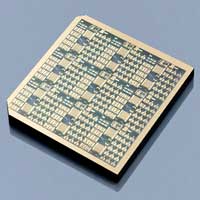 The advancement surpasses silicon and other mature technologies, and could help improve distances that electric cars, locomotives can travel.
The advancement surpasses silicon and other mature technologies, and could help improve distances that electric cars, locomotives can travel.
May 29th, 2020
Read more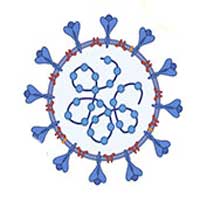 Advanced nanotechnology provides 'naked eye' visual detection of virus in 10 minutes.
Advanced nanotechnology provides 'naked eye' visual detection of virus in 10 minutes.
May 29th, 2020
Read more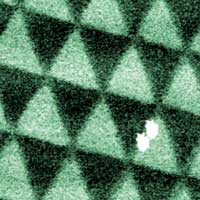 Researchers have demonstrated that atomic lattices of slightly twisted 2D transition metal dichalcogenides undergo extensive lattice reconstruction, which can pattern their optoelectronic properties on nanometre length scale.
Researchers have demonstrated that atomic lattices of slightly twisted 2D transition metal dichalcogenides undergo extensive lattice reconstruction, which can pattern their optoelectronic properties on nanometre length scale.
May 28th, 2020
Read more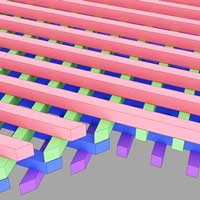 It was always thought that photonic crystals should be thick and bulky to be functional. Scientists now discovered that even very thin 3D photonic band gap crystals are powerful devices to strongly control the flow of light.
It was always thought that photonic crystals should be thick and bulky to be functional. Scientists now discovered that even very thin 3D photonic band gap crystals are powerful devices to strongly control the flow of light.
May 28th, 2020
Read more 3D micro-/nanofabrication holds the key to build a large variety of micro-/nanoscale materials, structures, devices, and systems with unique properties that do not manifest in their 2D planar counterparts. Recently, scientists have explored some very different 3D fabrication strategies such as kirigami and origami that make use of the science of cutting and folding 2D materials/structures to create versatile 3D shapes.
3D micro-/nanofabrication holds the key to build a large variety of micro-/nanoscale materials, structures, devices, and systems with unique properties that do not manifest in their 2D planar counterparts. Recently, scientists have explored some very different 3D fabrication strategies such as kirigami and origami that make use of the science of cutting and folding 2D materials/structures to create versatile 3D shapes.
May 27th, 2020
Read more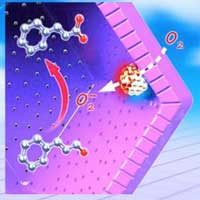 Researchers have demonstrated a facile synthesis of hollow-structured photocatalysts with controllable spatial location of active metals, chemical compositions and tunable shell thickness.
Researchers have demonstrated a facile synthesis of hollow-structured photocatalysts with controllable spatial location of active metals, chemical compositions and tunable shell thickness.
May 27th, 2020
Read more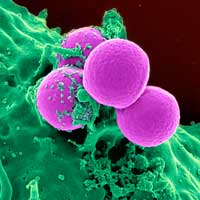 Researchers have found a way to impart durable antiviral and antibacterial properties to an aluminum alloy used in hospitals.
Researchers have found a way to impart durable antiviral and antibacterial properties to an aluminum alloy used in hospitals.
May 27th, 2020
Read more